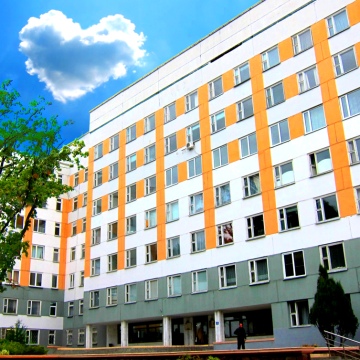_W2xEX_2x_2n_1920x880_9d2.jpg)
Catheter ablation of arrhythmia foci, also known as radiofrequency ablation (RFA), is a minimally invasive procedure aimed at treating abnormal heart rhythms (arrhythmias). This method involves using thin catheters to deliver energy (radiofrequency or cryoenergy) to areas of the heart causing the arrhythmia. This eliminates the abnormal foci or conduction pathways that cause the abnormal rhythm.
When is RFA performed?
Radiofrequency ablation is used to treat various types of arrhythmias that do not respond to drug therapy.
Main indications
- Atrial fibrillation. The most common arrhythmia, it involves irregular electrical signals in the atria.
- Atrial tachycardia. A rapid heart rate due to abnormal signals in the atria.
- Atrial fibrillation. Rapid and regular contraction of the atria.
- Atrioventricular reciprocating tachycardia (AVRT). A disorder associated with accessory pathways between the atria and ventricles. Wolff-Parkinson-White syndrome (WPW). A congenital disorder associated with the presence of an accessory pathway.
- Ventricular tachycardia. A life-threatening arrhythmia associated with abnormal signals in the ventricles.
- Atrioventricular nodal reentrant tachycardia (AVNRT) is a common form of supraventricular arrhythmia in which the electrical impulse circulates along two conduction pathways within the atrioventricular node.
Advantages of RFA
- Highly effective. Eliminates arrhythmia in most patients, reducing the need for lifelong drug therapy.
- A minimally invasive method. The procedure is performed through a puncture in the vessel, without incisions.
- Rapid recovery. Patients return to normal activities within a few days.
- Symptom relief. Relief from symptoms such as shortness of breath, palpitations, dizziness, and fainting.
How is the procedure performed?
Preparation for RFA
The patient undergoes examinations to identify the source of the arrhythmia.
- Electrophysiological study (EPS)
- Echocardiography : to assess the condition of the heart.
- Holter monitoring : recording of heart rhythm throughout the day.
- ECG (electrocardiography).
- The patient is temporarily discontinued from antiarrhythmic drugs before the procedure.
RFA procedure
- Anesthesia. Local anesthesia is used at the puncture site and, if necessary, sedation.
- Access to the heart. Through a puncture in the femoral vein (or, less commonly, the arm/neck vein), catheters are directed to the heart under X-ray guidance.
- Detecting the source of arrhythmia. Using electrophysiological catheters, the physician identifies areas of abnormal electrical activity.
- Ablation. Radiofrequency energy (heat) or cryoenergy (cold) is directed to abnormal areas, destroying them and eliminating the source of the arrhythmia.
- Result verification. After ablation, repeated cardiac stimulation is performed to confirm the procedure's success.
The procedure usually takes 2-4 hours.
Postoperative period
- Inpatient observation. The patient remains under observation for 1–2 days to monitor their condition.
- Limit physical activity. Avoid strenuous exercise for 1–2 weeks.
- Medication support. Your doctor may temporarily prescribe antiarrhythmic drugs or anticoagulants.
- Follow-up examination. Patients undergo regular examinations, including an ECG and, if necessary, a repeat electrophysiological study.
Results of the operation
- Efficiency. The success rate of RFA reaches 50–95%, depending on the type of arrhythmia.
- Improved quality of life. Patients report a significant reduction in symptoms and restoration of physical activity.
- Reduced need for medications. Many patients no longer require lifelong medication therapy.
Catheter ablation of arrhythmia foci (RFA) in Belarus is a modern and effective method for treating arrhythmias, helping to eliminate the underlying cause and improve patients' quality of life. Thanks to its minimally invasive approach, the procedure is safe and has a high success rate. Regular monitoring by a cardiologist and following the doctor's recommendations ensure long-term positive results and help maintain heart health.


